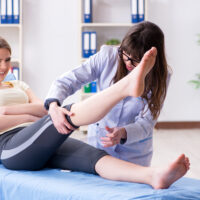7 Ways to Alleviate Spasticity Symptoms
Neurological disorders can occur in various forms and affect an individual due to age, genetics, and certain treatments. Such complications could give rise to symptoms like spasticity, which causes some muscles to contract at once. The intensity of this symptom can vary among patients and may affect one’s movement and speech.

Working with a healthcare team
There are various management options for spasticity. Individuals showing symptoms usually undergo more than one treatment at a time. The most effective way to treat the symptom is by working with a team of healthcare professionals specializing in various fields. This team includes a physiatrist, neurologist, advanced practice clinician, occupational therapist, and physical therapist. A neurosurgeon, orthopedic surgeon, and speech and language pathologist might also be part of this professional team. Below are some of the most common treatment options for muscle spasticity.
Physical and occupational therapy
A physical therapist usually focuses on low-impact strengthening and stretching exercises and even mobility training. Movement associated with standing and walking are two common types of routines that experts recommend. Other physical therapy exercises include calf stretches on an incline board, swimming, cycling, and treadmill training. Exercise may help temporarily reduce spasticity between a few minutes and a few days. It could also help manage the long-term impact of spasticity, such as stiffness, muscle pain, and contracture. On the other hand, An occupational therapist will recommend routines associated with upper extremity strengthening, stretching, and training to help one perform daily activities. It could include things like cooking, bathing, and grooming.
Speech therapy
Speech therapy is another treatment option for patients whose spasticity has affected their speech. The management method helps children and adults improve their ability to speak or communicate effectively and benefits their quality of life. For children, speech therapy could involve play, such as language-based board games or sequencing activities. For adults, the therapy may focus on improving particular skill sets, such as strengthening coordination between the brain and mouth. Some examples of this therapy include facial movements, tongue and mouth exercises, reading out loud, and playing word games.
Assistive devices
A healthcare professional might recommend a range of assistive devices for individuals with spasticity. The devices may help one move around and perform daily tasks more efficiently and safely.
- A cast or a brace are supportive devices that one could wear to reduce mobility and provide support. The equipment could limit involuntary spasms and relieve tight muscles. For example, using a cast or brace for affected regions of the body may offer an optimum stretch of spastic muscles to improve the range of motion and can facilitate function.
- Splints are often recommended for spasticity, with a carrying function based on where one requires it. If spasticity affects the hands, a splint could help keep them open. A splint could help support muscles and joints when the symptom affects the legs.
- A cane can support up to 25% of one’s body weight. It makes the assistive device ideal for one to move around without applying too much pressure on the affected muscles. There are various cane types, including the ones with a single point of contact with the ground or those with four legs at the bottom.
- Walkers can bear more weight than a cane (up to 50%) and help people with movement if they are affected by various symptoms, including muscle spasticity. A walker comes in various varieties, including foldable types. A healthcare professional who recommends a walker may also guide the patient on how to balance themselves by using their upper body strength.
- Wheelchairs come in various sizes, designs, and materials. They are suitable for people who find it difficult or impossible to move their legs for a longer time. One should consult a healthcare professional about the best option for their condition.
People with spasticity may also find devices such as hearing aids and adaptive eating utensils helpful in managing and improving their condition.
Prescriptions
A healthcare professional may suggest various prescriptions if symptoms like spasticity interrupt one’s ability to sleep and daily activities. For instance, it could manage severe muscle pain and tightness, which could keep one awake at night. Such remedies are typically prescribed in combination with other therapies and will come with specific dosage instructions.
Surgery
A healthcare professional might recommend surgery to treat severe muscle spasticity. Treatment types may include intrathecal baclofen (ITB) therapy, Selective dorsal rhizotomy (SDR), and orthopedic surgery. The type of surgery will differ based on one’s overall health and affected body areas.
New treatments for spasticity
Besides the options above, one could speak to their healthcare provider about new treatments for spasticity. For instance, deep brain stimulation is currently being studied as a treatment to help with relieving spasticity if other measures do not work. One could also speak to the care provider about modern oral and intravenous prescriptions to manage spasticity caused by various health conditions.











